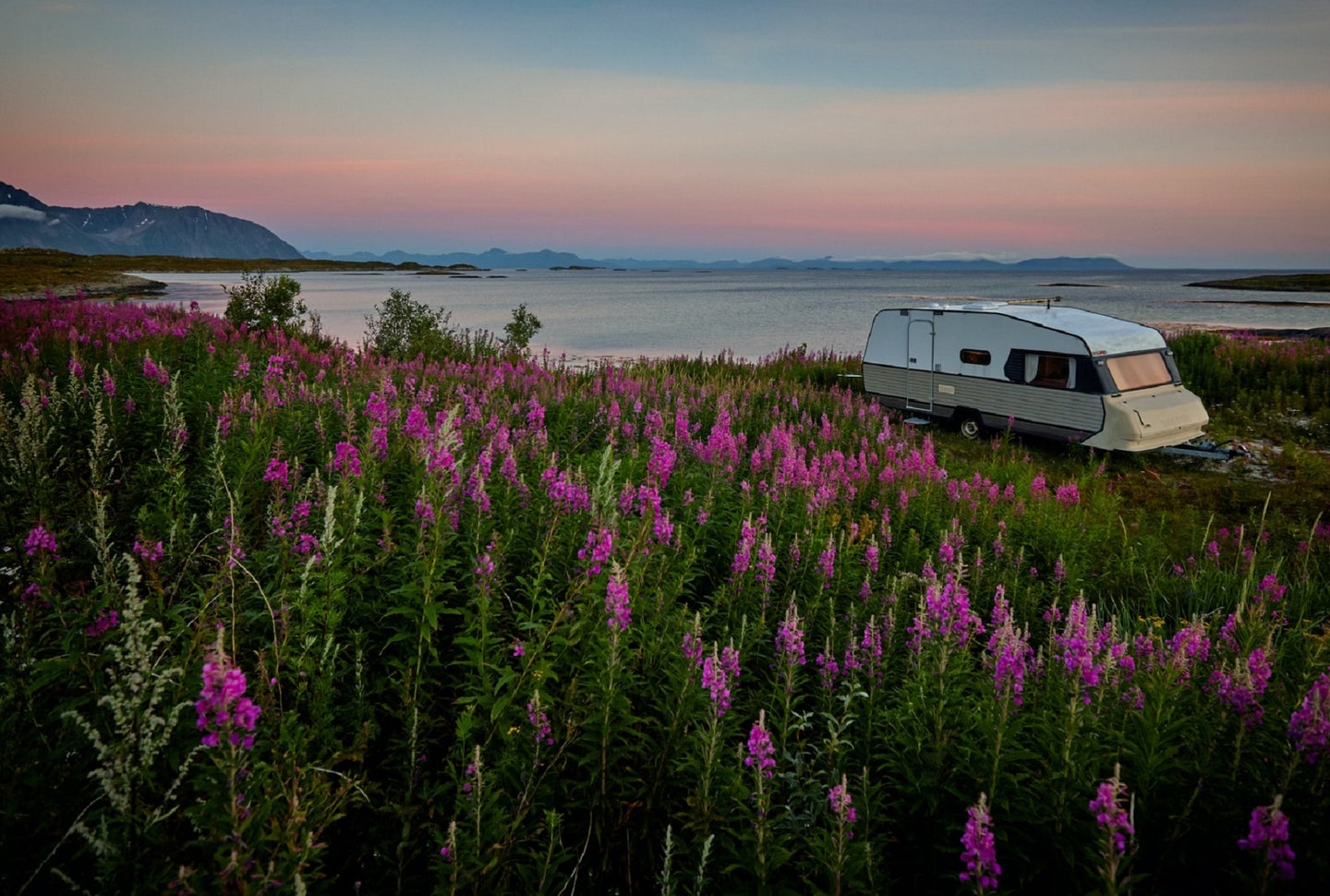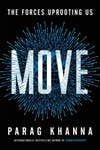All homes of the future should come with wheels
With climate change, the van life trend might be more prescient than we think.

Excerpted from MOVE: The Forces Uprooting Us by Parag Khanna. Copyright © 2021 by Parag Khanna. Excerpted with permission by Scribner, a division of Simon & Schuster, Inc.
In the fall of 2018, Kyle Nossaman, an editor at Gear Junkie magazine, and his wife locked the door of their upscale apartment in Minneapolis and set off for a year of exploring America. They visited most of the lower forty-eight states and almost all the national parks. They rode mountain bikes and a motorcycle, camped and hiked, visited old friends and made new ones, all the while keeping up their jobs part-time, even saving money along the way. And they did all this without ever getting on a plane—because they were driving and living in their very own converted school bus.4
The COVID lockdown was an existential disaster for America’s retail sector—unless you happened to be selling mobile homes. Sales of Thor large camper vans surged after the pandemic lockdown ended, and Mercedes even released its iconic Camper (that sleeps four) in the US after years of popularity in Europe. The RV Industry Association reported a nearly 200 percent jump in sales from the same period of 2019.5 Trailer homes have emerged as a trendy, cost-effective, and sustainable alternative to traditional home ownership. Movements like #skooliebus on Instagram (featuring school buses retrofitted into mobile homes) and “tiny houses” on Pinterest point to the growing popularity of mobile and minimalist living.
The trailer home is the ultimate symbol of the new American mobility. Twenty-five percent of mobile homes are owned by millennials, and the more they and Gen-Z reach home-buying age, the more mobile home sales go up.6 In other words, youth are consciously choosing not to buy houses (that they can’t afford anyway), snapping up motor homes instead. Having witnessed the financial crisis demolish their parents’ house value, they can hardly be blamed for having more faith in mobility than property. Are we witnessing the reinvention of the American dream for the quantum age?

Mobile homes are part of American lore, but a surprising feature of America’s present and future. An older generation of RV dwellers already roams the country seeking part-time jobs that offer cash and food, often exploited like migrant laborers, as Jessica Bruder documents in her book Nomadland, whose film adaptation won the Oscar for best picture in 2021. Trailer home communities have a sense of identity and security that now also draws in young people. Gloria Steinem’s memoir My Life on the Road fondly recalls the pride of an all-female trailer park in Arizona hat had streets named after Gertrude Stein and Eleanor Roosevelt. For women or the LGBTQ community, trailer parks provide the vibe of a gated residential community but without the price tag. With ever fewer school age children in America, there are plenty of school buses available for purchase—though their engines should ideally be switched from diesel to electric.
“Mobile real estate” is becoming an asset class unto itself, a wise investment for a world where flooding could sweep away your home, giant hailstones could smash through its roof, or a sinkhole could emerge at the end of your driveway. You’re better off if your home is a giant car. Sealander’s trailer has an onboard motor that turns it into a boat, perfect for navigating flooded areas. Especially if you don’t know where your next job will be, a mobile home means you can move to it on short notice. Moving is the ultimate expression of reinvention, and perhaps the most effective as well.
America’s youth should stop chaining themselves to homes they neither need nor can afford—and which aren’t located where they need to be. Instead, we should be designing and building for an age of perpetual mobility. The real estate industry continues to pour concrete into McMansions, and even claims there is a nationwide housing shortfall of 2.5 million homes. But does their crystal ball tell them where people will want to live five years from now? Do they know where the jobs will be? Are they sure they’re building in climate-resilient areas?
There is a reason why these homes are made to be disaster-resistant: One might have to move again.
The great demographic deflation means an inevitable crash in real estate prices, and competition from prefab homes will bring those down even further. Freddie Mac (which provides liquidity to the housing market) has launched a slew of programs to encourage first-time home buyers to invest in far cheaper prefab homes—even if it leaves municipalities and banks sitting on trillions of dollars of stranded housing. No wonder then that an investor such as Warren Buffett has quietly become one of the largest owners of “pre-fabulous” home manufacturers such as Clayton Homes. Even in cheaper states, a manufactured home costs less than half the cost of a two-bedroom apartment, and renting a prefab as little as one-third as much.
The best part of the prefab housing revolution? They can be delivered on the back of a truck—and moved as well. The era of 3D-printed micro housing is at hand. Amazon sells do-it-yourself homemaking kits that cost as little as $20,000 and can be solar-powered or connected to local energy grids. Mighty Buildings’ 3D-printed “casitas” or “granny flats” can be deposited in backyards to cater to the millions of aging lowincome renters or youth on tight budgets. Companies such as Boxabl and Ten Fold make homes that expand to triple their container size in minutes. Millions of discarded shipping containers themselves are easily retrofitted into (mobile) homes. One Estonian startup builds trailer-delivered prefab units that can be homes, offices, shops, storage units, cafes, community areas, or serve many other purposes. All that is required is a flat space for them to be set down on.
Which countries will make the land available, subsidize the cost, and enable or even require public service delivery to 3D home encampments? The Netherlands and France have become leaders in this progressive social policy, while Swedish furniture maker IKEA and construction company Skanska have teamed up to launch BoKlok (Live Smart), a firm that has built more than ten thousand homes in Scandinavia already. In their UK pilot, new occupants pay BoKlok whatever they can afford. Rather than cluttering homes with IKEA stuff, you can just buy your entire home from IKEA.
Movable homes are rolling off assembly lines through an entirely new production process that combines 3D printing, recycled materials, and robotic efficiency. For overpopulated countries in precarious geographies, SoftBank-funded Katerra does turnkey home design and construction for entire towns on short notice, while Icon has already 3D-printed entire villages in Mexico and sturdy units for those living in tents around Austin. But there is a reason why these homes are made to be disaster-resistant: One might have to move again. Self-sufficient, solar-powered container homes can be wheeled to adjust to rising tides, with portable loos that use microbes rather than water to turn human waste into odorless fertilizer. (These are even being deployed on Mount Everest.) This makes great sense for a world of seasonal migrations in which climate change and natural disasters as much as professional preference dictate where we live. For those choosing wheeled residences as a lifestyle choice, architects are designing stylish micro homes with woodstoves; solar power; rooftop water collection; compost toilets; separate kitchen, bedroom, and living areas; and large windows. Their owners can Instagram every new vista.